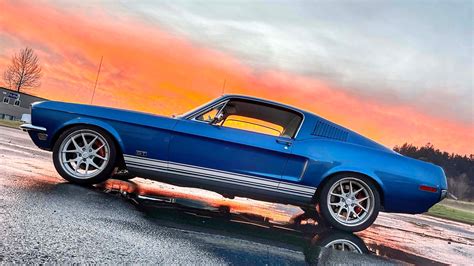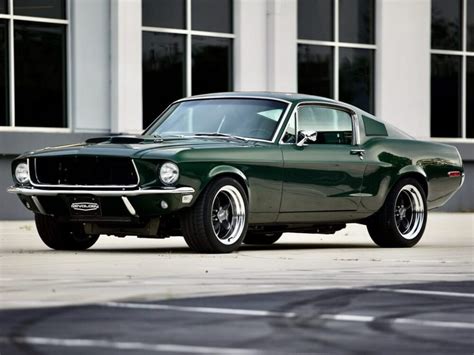
Sporty cars, despite their appeal, often face a premature demise due to market shifts, production costs, and changing consumer preferences. Several models, celebrated for their performance and design, have been discontinued, leaving enthusiasts longing for their return.
Automotive history is replete with examples of sporty cars that captured the hearts of enthusiasts but ultimately couldn’t survive the test of time. These vehicles, ranging from nimble roadsters to high-performance coupes, often fell victim to a combination of factors, including evolving market trends, stringent regulations, and economic realities. While some models enjoy a resurgence in popularity as classics, others fade into obscurity, remembered only by a dedicated following. The story of these discontinued sporty cars is a reminder of the volatile nature of the automotive industry and the challenges manufacturers face in balancing passion with practicality.
The Pontiac Solstice and Saturn Sky
The Pontiac Solstice and Saturn Sky, General Motors’ attempt to revive the affordable roadster segment, debuted in the mid-2000s to much fanfare. These fraternal twins offered distinctive styling and a fun driving experience at a relatively accessible price point. “These were pretty sharply styled and very affordable sports cars, especially if you chose the base model,” notes Yahoo! Autos. The Solstice, with its aggressive lines and available GXP turbo variant, appealed to those seeking performance, while the Sky offered a more refined and European-inspired aesthetic.
However, their success was short-lived. Despite initial strong sales, production issues, limited practicality, and the eventual demise of the Pontiac and Saturn brands sealed their fate. The Solstice and Sky, while fondly remembered, represent a missed opportunity for GM to establish a lasting presence in the affordable sports car market. The two-seater convertible, envisioned as a halo car for Pontiac, quickly became a symbol of the brand’s decline before its ultimate shutdown. Their discontinuation highlights the precarious nature of niche vehicles within larger automotive conglomerates. Despite their enthusiast appeal, the Solstice and Sky were deemed expendable during GM’s restructuring.
The Mazda RX-8
Mazda’s RX-8, the successor to the iconic RX-7, carried the torch for rotary engine technology. This four-door sports car offered a unique driving experience, characterized by its high-revving Renesis rotary engine and balanced handling. Unlike many sports cars focused solely on outright power, the RX-8 emphasized driver engagement and a distinctive character.
However, the rotary engine’s inherent drawbacks, including poor fuel economy and concerns about reliability, ultimately contributed to the RX-8’s downfall. “The RX-8 ultimately succumbed to the same fate as its predecessor, with the rotary engine’s low gas mileage and high oil consumption earning it a bad reputation among mainstream buyers.” The high-revving nature of the engine, while exhilarating to some, also contributed to increased wear and tear, further impacting its long-term appeal. Additionally, tightening emissions regulations made it increasingly difficult for Mazda to keep the rotary engine compliant. Despite its innovative technology and unique driving experience, the RX-8 was discontinued in 2012, marking the end of Mazda’s rotary-powered sports car era for the time being (though Mazda has hinted at a possible future return of the technology).
The Nissan 370Z
The Nissan 370Z, a descendant of the legendary Z-car lineage, represented a more modern interpretation of the classic sports car formula. Its sleek design, powerful V6 engine, and rear-wheel-drive configuration provided an engaging driving experience. The 370Z offered a balance of performance and affordability, making it an attractive option for enthusiasts seeking a traditional sports car experience.
Despite its inherent appeal, the 370Z suffered from a lack of significant updates throughout its production run. While the car remained fundamentally sound, its aging design and technology began to feel dated compared to newer competitors. Sales dwindled in recent years, leading to its eventual replacement by the new Nissan Z. “After over a decade on the market with minimal changes, the 370Z began to show its age, ultimately leading to its discontinuation,” the Yahoo! Autos article indicated. Its long production run without major redesigns ultimately led to consumer fatigue, highlighting the importance of continuous improvement in the competitive automotive market. While the new Nissan Z retains the spirit of its predecessor, the 370Z will be remembered as a solid, if somewhat stagnant, entry in the Z-car family.
The Honda S2000
The Honda S2000, a high-revving roadster, became an instant classic when it debuted in the late 1990s. Its naturally aspirated 2.0-liter engine, capable of producing an impressive 240 horsepower, was renowned for its responsiveness and exhilarating performance. The S2000’s precise handling and driver-focused design made it a favorite among driving enthusiasts.
However, the S2000’s relatively uncompromising nature, with its stiff suspension and high-revving engine, may have limited its broader appeal. “The S2000 was a pure sports car, with a focus on performance above all else,” Yahoo! Autos notes. As consumer preferences shifted towards more comfortable and versatile vehicles, the S2000’s sales began to decline. Additionally, the lack of a more affordable or less aggressively tuned variant may have prevented it from attracting a wider audience. Despite its cult following and enduring popularity in the used car market, the S2000 was discontinued in 2009, leaving a void in Honda’s lineup. Its high-performance engine and razor-sharp handling continue to make it a sought-after collector’s item.
The BMW Z4 M Coupe
The BMW Z4 M Coupe, a high-performance variant of the Z4 roadster, offered a more aggressive and focused driving experience. Its powerful inline-six engine, derived from the E46 M3, delivered exhilarating acceleration and a distinctive exhaust note. The Z4 M Coupe’s stiffer suspension and enhanced brakes further sharpened its handling capabilities.
However, the Z4 M Coupe’s limited production run and relatively high price tag contributed to its rarity. “The Z4 M Coupe was a niche model, appealing to a specific type of enthusiast,” says Yahoo! Autos. Its uncompromising performance and somewhat polarizing styling may have also limited its broader appeal. Despite its limited availability, the Z4 M Coupe remains a highly desirable collector’s item, prized for its raw performance and unique character. Its combination of BMW’s legendary inline-six engine and a coupe body style makes it a standout model in the Z4 lineup.
The Audi TT
The Audi TT, known for its Bauhaus-inspired design, made a statement when it first launched. While the original model could be a bit wayward in its handling, later versions smoothed out the rough edges and provided a refined, sporty experience. With its distinctive design, available Quattro all-wheel drive, and turbocharged engines, the TT offered a unique blend of style and performance. It was available both as a coupe and a roadster.
However, the TT’s sales have declined in recent years as consumer preferences have shifted towards SUVs and crossovers. The move towards electrification is also a factor. Audi has announced that the TT will be discontinued, replaced by an electric model. This decision reflects the broader trend in the automotive industry towards electrification and the decline in popularity of traditional sports cars. The TT’s legacy as a design icon will likely endure, even as it makes way for a new generation of electric vehicles. Its early success demonstrated that Audi could produce stylish and sporty cars that appealed to a broader audience.
The Alfa Romeo 4C
The Alfa Romeo 4C was a lightweight, mid-engined sports car that emphasized driving purity. With its carbon-fiber monocoque chassis and turbocharged engine, the 4C offered a raw and engaging driving experience reminiscent of classic sports cars. Its striking design and nimble handling made it a standout in the sports car market.
However, the 4C’s relatively high price tag, limited practicality, and lack of power steering hindered its broader appeal. The spartan interior and sometimes unforgiving ride also limited its mainstream appeal. While praised for its driving dynamics, the 4C struggled to compete with more refined and versatile sports cars. As Alfa Romeo shifts its focus towards SUVs and electrified models, the 4C was discontinued, marking the end of its brief but memorable run. Its carbon fiber construction and focus on minimizing weight were hallmarks of its design philosophy, setting it apart from many of its competitors.
The Jaguar F-Type
While not officially discontinued at the time of the original article’s publishing (though it has since ceased production), the Jaguar F-Type represents another example of a sporty car facing an uncertain future. The F-Type, available as both a coupe and a convertible, is celebrated for its stunning design, powerful engines, and luxurious interior. It has often been praised as one of the best-looking cars on the market, with a design that harkens back to Jaguar’s iconic E-Type.
However, with Jaguar’s commitment to becoming an all-electric brand, the F-Type’s future was uncertain. The company had announced that 2024 would be its final year, marking the end of the road for Jaguar’s internal combustion engine sports cars. The F-Type’s discontinuation reflects the broader shift in the automotive industry towards electrification and the challenges faced by traditional sports car manufacturers in adapting to this change. It represents the end of an era for Jaguar, as it transitions to a new identity centered around electric vehicles. The F-Type will be remembered as a beautiful and powerful sports car that captured the spirit of Jaguar’s heritage.
Wider Trends and Market Factors
The discontinuation of these sporty cars reflects broader trends in the automotive market. The rise of SUVs and crossovers, the increasing focus on electrification, and the changing preferences of consumers have all contributed to the decline in popularity of traditional sports cars. Automakers are increasingly prioritizing vehicles that offer greater practicality, fuel efficiency, and advanced technology.
“The market for sports cars has been shrinking for years, as consumers have gravitated towards SUVs and crossovers,” the Yahoo! Autos article explained. The high cost of developing and manufacturing sports cars, combined with their relatively low sales volume, makes it difficult for automakers to justify their continued production. Additionally, increasingly stringent emissions regulations and safety standards are adding to the challenges faced by sports car manufacturers. The shift towards electric vehicles presents both a challenge and an opportunity for the sports car segment. While some automakers are discontinuing their traditional sports cars, others are developing electric sports cars that offer similar levels of performance and excitement. The future of the sports car may lie in electrification, but the legacy of these discontinued models will continue to resonate with enthusiasts for years to come. These cars represent a passion for driving and a dedication to performance that is often lacking in more mainstream vehicles. Their disappearance from the market is a reminder of the ever-changing landscape of the automotive industry.
The Appeal of Sporty Cars
Despite the challenges they face, sporty cars continue to hold a special place in the hearts of enthusiasts. These vehicles offer a unique driving experience, characterized by their nimble handling, powerful engines, and distinctive styling. Sporty cars often evoke a sense of freedom, excitement, and individuality. They represent a passion for driving and a rejection of the mundane.
“Sporty cars are more than just transportation; they are a statement,” Yahoo! Autos observed. They allow drivers to express their personality and enjoy the thrill of the open road. The emotional connection that people have with their cars is often strongest with sporty models, which are seen as extensions of their own identity. The enduring appeal of these cars is evident in their continued popularity in the used car market and their presence in car clubs and online communities. Even as new technologies and trends emerge, the fundamental desire for a fun and engaging driving experience remains strong. The manufacturers who can tap into this desire and offer sporty cars that are both exciting and relevant will be well-positioned for success in the future.
Conclusion
The discontinuation of these sporty cars serves as a reminder of the challenges and changes within the automotive industry. While market forces and shifting consumer preferences have contributed to their demise, their legacy endures among enthusiasts who appreciate their unique designs and driving experiences. The future of the sports car segment remains uncertain, but the passion for driving and the pursuit of performance will likely ensure that sporty cars continue to evolve and adapt. The automotive landscape is constantly evolving, and manufacturers must innovate to keep up with changing trends and regulations. The models discussed represent a variety of approaches to the sports car formula, each with its own strengths and weaknesses. Their discontinuation highlights the difficulty of creating a successful sports car in today’s market. The challenge for automakers is to find a way to balance performance, practicality, and affordability while also meeting the demands of increasingly stringent regulations. The cars that can achieve this balance will be the ones that survive and thrive in the years to come.
Frequently Asked Questions (FAQ)
1. Why are sporty cars often discontinued?
Sporty cars are frequently discontinued due to a combination of factors including shifting consumer preferences towards SUVs and crossovers, declining sales volume, the high cost of development and production, increasingly strict emissions regulations, and the automotive industry’s transition towards electrification. The Yahoo! Autos article explains, “The market for sports cars has been shrinking for years, as consumers have gravitated towards SUVs and crossovers.” When a model’s profitability declines due to these factors, manufacturers often opt to discontinue it.
2. What made the Pontiac Solstice and Saturn Sky unsuccessful in the long run?
The Pontiac Solstice and Saturn Sky suffered from production issues, limited practicality, and ultimately, the demise of the Pontiac and Saturn brands themselves, which were casualties of General Motors’ restructuring. While initially popular, their long-term viability was compromised by these factors.
3. What were the main issues with the Mazda RX-8’s rotary engine?
The Mazda RX-8’s rotary engine, while offering a unique high-revving experience, suffered from poor fuel economy, high oil consumption, and concerns about long-term reliability. These drawbacks contributed to a negative perception among mainstream buyers and ultimately led to its discontinuation. According to the Yahoo! Autos source, “The RX-8 ultimately succumbed to the same fate as its predecessor, with the rotary engine’s low gas mileage and high oil consumption earning it a bad reputation among mainstream buyers.”
4. Why did the Nissan 370Z get discontinued despite its legacy?
The Nissan 370Z, despite its connection to the legendary Z-car lineage, suffered from a lack of significant updates throughout its long production run. Its aging design and technology made it less competitive compared to newer models. Consumers looking for updated features and modern styling led to its replacement by the new Nissan Z.
5. What made the Honda S2000 so special, and why was it discontinued?
The Honda S2000 was a highly regarded roadster celebrated for its high-revving engine, precise handling, and driver-focused design. However, its relatively uncompromising nature, with a stiff suspension and high-revving engine, limited its broader appeal. As consumer preferences shifted towards more comfortable and versatile vehicles, the S2000’s sales declined, leading to its discontinuation. It was “a pure sports car, with a focus on performance above all else,” according to Yahoo! Autos, which might have restricted its mainstream adoption.
6. Why was the BMW Z4 M Coupe a limited-production model, and what made it so desirable?
The BMW Z4 M Coupe was a limited-production model because it catered to a niche market of enthusiasts seeking a more aggressive and focused driving experience. Its high price tag, uncompromising performance, and somewhat polarizing styling contributed to its rarity. Despite its limited availability, the Z4 M Coupe remains highly desirable due to its raw performance, unique character, and the combination of BMW’s legendary inline-six engine with a coupe body style.
7. What factors led to the discontinuation of the Audi TT?
The Audi TT, while known for its distinctive design and sporty performance, faced declining sales as consumer preferences shifted towards SUVs and crossovers. Additionally, Audi’s move towards electrification contributed to the decision to discontinue the TT and replace it with an electric model.
8. What was unique about the Alfa Romeo 4C, and why did it struggle to gain wider appeal?
The Alfa Romeo 4C was unique due to its lightweight carbon-fiber monocoque chassis and mid-engined configuration, which emphasized driving purity and offered a raw and engaging experience. However, its high price tag, limited practicality, lack of power steering, spartan interior, and sometimes unforgiving ride hindered its broader appeal. While praised for its driving dynamics, the 4C struggled to compete with more refined and versatile sports cars.
9. How does Jaguar’s commitment to becoming an all-electric brand affect the future of the F-Type?
Jaguar’s commitment to becoming an all-electric brand meant that the F-Type, a traditional internal combustion engine sports car, faced an uncertain future. The company announced 2024 as its final year, marking the end of the road for Jaguar’s ICE sports cars. This decision reflects the broader shift in the automotive industry towards electrification and the challenges faced by traditional sports car manufacturers in adapting to this change.
10. What broader trends and market factors are contributing to the decline in popularity of traditional sports cars?
Broader trends and market factors contributing to the decline in popularity of traditional sports cars include the rise of SUVs and crossovers, the increasing focus on electrification, changing consumer preferences for practicality and fuel efficiency, the high cost of developing and manufacturing sports cars, and increasingly stringent emissions regulations and safety standards.









